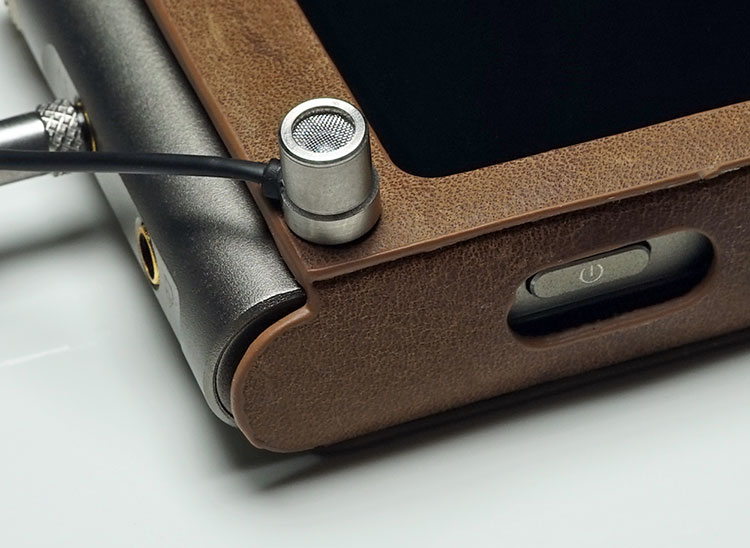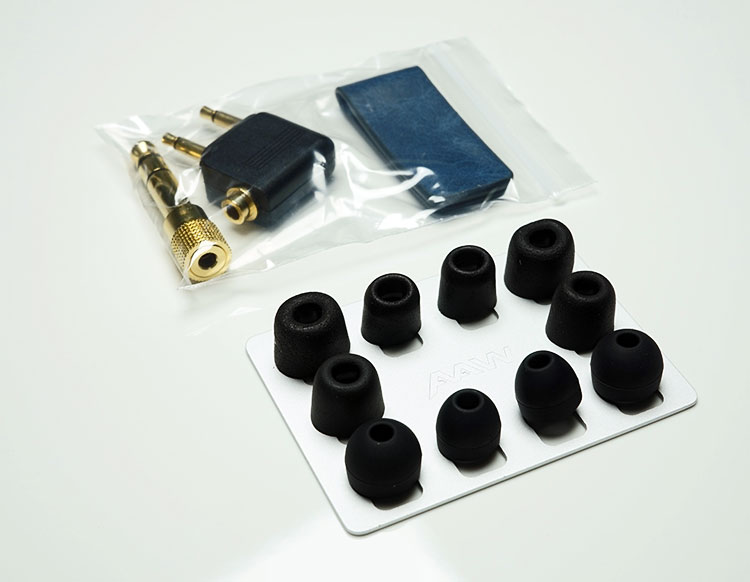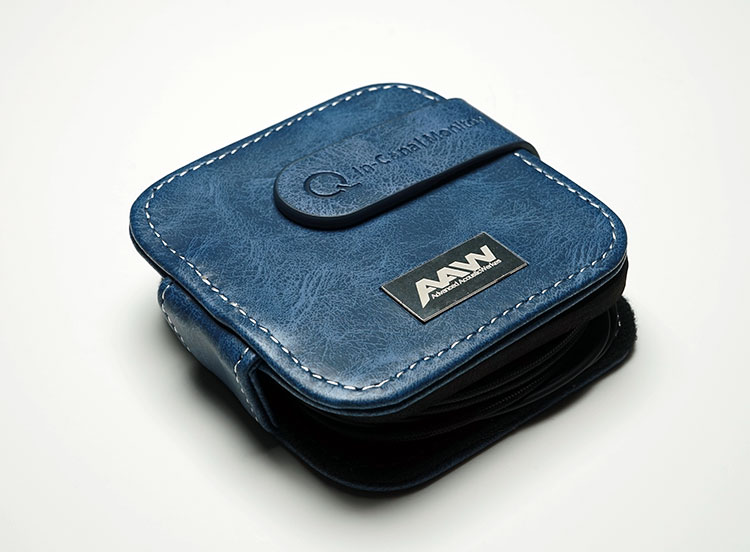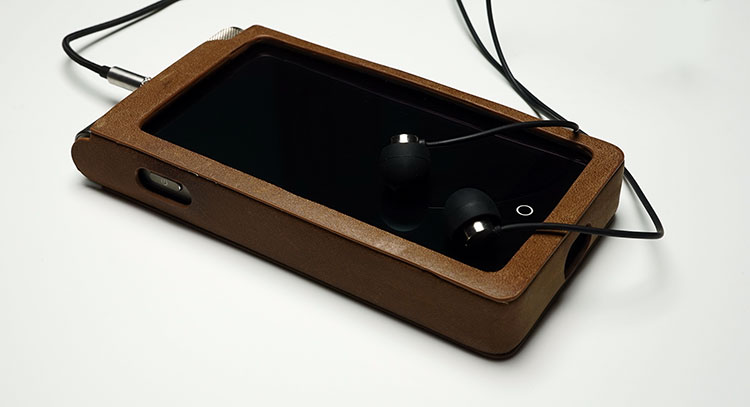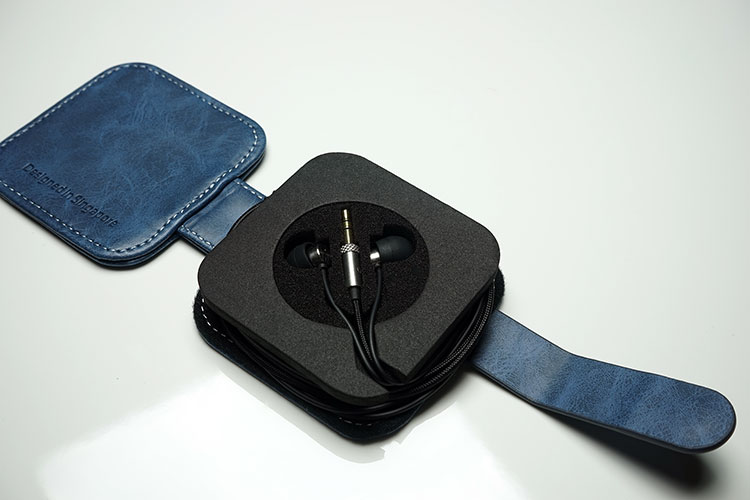The AAW Q In-Canal Monitor is a tiny single dynamic driver in-canal universal monitor, smaller than an IEM. It is priced at SG$299.
Disclaimer: The AAW Q IN-Canal Monitor sent to us is a sample in exchange for our honest opinion in this review. We thank the teams at AAW for giving us this opportunity.
To read more about AAW (Advanced AcousticWerkes) products reviewed on Headfonics click here.
Roadmap
This will be my 3rd encounter with AAW products, the first being the musical W300AR custom and the second being their first universal IEM, the budget-friendly Nebula One. In each of these releases, I got a clear sense of the AAW thought process.
This is not just corporate off the production line vanilla earphones; these guys enjoy what they are doing with audio gear and are putting something out there that, for one reason or another, catches the eye.
The AAW Q In-Canal Monitor could not be more eye-catching, more focused in vision, and at SG$299 (US$220) more mid-fi than the Nebula One universal IEM. Yup, it’s another universal product from AAW but there is something very different about this one.
What Is The Pitch?
Let’ start with the claim that the Q is perhaps the smallest ICM in the market today. That is not a typo, it is technically an ICM or In-Canal Monitor and not to be confused with the term IEM, which is an In-Ear Monitor. This little guy is smaller than the darn tips fitted on it that’s how small it is. I know some stripped out IEM dynamic drivers that are bigger than these ICM’s also.
Price-wise this is not a budget ICM either. $220 (US) is pushing mid-fi easily and as such AAW knows that this type of product will have more appeal to those who fully buy into the iGadget mobile lifestyle due to its unique proportions as well as place it into audiophile territory given the price is closer to a few well-known competitors.
You are talking about Oriveti, Fidue, Campfire Audio, JVC to name but a few, all with good quality earphones at a similar price. The one thing that will give the Q a visual edge though is that diminutive form factor. It’s a big pitch for such a small ICM.
Build
Let’s start with the dimensions. The AAW Q form factor measures in at just 8.8mm in length, 6mm in diameter and weighs less than 1g per side. In context, the Westone W4 weighs in at 12g and I tend to think of that as one of the lightest of that type. It is also ten times lighter than the 10g woody Zero from Shozy which pretty much puts it in the category of Ant-Man audio gear.
Internals
Driver
The microengineering deployed to make something such as the AAW Q is quite remarkable. Inside the 8.8mm length, 200-micron thick, milled stainless steel shell sits a 6mm micro dynamic driver, leaving roughly 1.4mm either side and maybe less than 2-3mm top and bottom for everything else to sit alongside it.
That is a very small acoustic chamber. Too small for any regular diaphragm to work properly. AAW has solved that problem by placing the driver in the front cavity of the acoustic chamber with the diaphragm right at the tip. The theory being this actually will reduce resonation issues and keep everything sounding coherent and smooth.
Diaphragm
AAW’s driver diaphragm has been built from the ground up to take into account the limited space the Q has to work with to get a proper dynamic driver sound. The body of the driver is steel the rest is an ultra-thin bio-composite diaphragm.
This thinness of this diaphragm, combined with a very tight fast-moving center ring and a more flexible outer ring, allows the Q driver to deliver a pretty impressive 10Hz to 40kHz frequency response on paper. That’s decent, though not earth-shattering, bass performance combined with plenty of high-end extension on paper.
Fit & Seal
Literally, you stuff the Q down your ear. That might seem slightly disconcerting at first glance but after a few false starts it slotted right in. In the back of mind, I am thinking crazy thoughts of the Q sliding all the way down the canal never to return but that’s what the tips are there to guard against.
These tips are designed by AAW precisely to prevent the micro-units from slipping into an eternity of audiological and biological purgatory as well as getting the seal just right. And they do just that I might add. The seal is excellent, even with the single bore tip that comes stock on the Q. If you need more there are some even bigger foams that should really increase the passive isolation by a good few dB.
Hilariously the tips are bigger than the AWW Q body but mechanically they really needed to be or else the whole concept simply would not work. There is nothing pressing against the outer ear either which feels remarkably comfortable and makes you wonder why no one thought of this before.
Cable
The AAW Q is a non-detachable cable design and done on purpose. The mechanics of designing and using a detachable solution might sit well with cable swappers but invariably it would blow the proportions of the Q form factor far away from the design goal of making the smallest ICM in the world.
Instead, AAW developed an embedded SR system using flexible TPE materials that are specifically designed to cope with strain and swing movement. Given also the fact it an in-canal fit the concept of either a stiffened external SR or a detachable module made no sense. This needs to glide in and thankfully it does.
The OFC cable itself is approx 1,2m length so a decent length for portable use and suffers from very little memory retention with that supple nylon cloth coating. Microphonics are low but not super low and that’s understandable given that the cable is almost inside your ear.
You can reduce that noise level further by using the supplied cable clip in the accessory kit or wearing the cable over the ear. Isolation is much the same whether worn straight down or over the ear. Both the y-splitter and 3,5mm jack are designed with the same metal materials and finish and AAW have also included a fairly discreet black rubber chin strap just above the metal y-split tubing.
Accessories & Packaging
Unfortunately, the package I received is sans retail packaging due to delivery constraints but the accessory set is pretty good actually. Inside you receive:
- Earphone sleeve: Foam 3 pairs, Ultra-Flex 3 pairs
- AAW carrying pouch
- Flight adapter
- 1/4 inch adapter
- User manual
- Warranty card
The tip selection is rather like the RHA and Noble’s silver metal tray design with each tip occupying its own dedicated slot. Sadly, you cannot fit the tray inside the rather diminutive blue strapped carry pouch which is a shame since you have to carry it separately leaving a bigger chance of them falling off and being lost as a result.
The little blue carry pouch is built on the same design philosophy as the IE800 from Sennheiser with a foam contoured top cutaway for holding the drivers and jack and the rest of the cable sliding through and wrapping around the side.
You then simply close the flip top and press down on the magnetically sealed strap and you are good to go. It’s very small, very pocketable also and fitting for the AAW Q’s design vision.
AAW Q In-Canal Monitor Sound Impressions
Tonality
The AAW Q needs a bit of power to sound optimal but when it does it really impresses for a 6mm micro driver. Tonally, the Q has a fairly clean tone with a warm and natural mid-bass elevated low-end, a neutral midrange with a slightly elevated upper midrange and an energetic but very well extended treble performance.
It is not a v-shaped profile as such, though there is a dip in the lower mids which keeps the Q from sounding overly thick or suffering from bass bleed. The emphasis here is on a tactile but musical response pitched more for modern RnB, EDM, and pop than out and out rock or metal.
It is not hugely detailed and analytically it might come up a bit short but in return, it is delightfully engaging and pretty easy on the ear for long listening sessions.
Bass
Bass on the Q is full sounding but tuned with a mid-bass elevation around 100-250Hz and instead, rolling off the sub-bass presence once you start dropping down to 50Hz and beyond.
The mid-bass elevation is not terribly sharp, more of a gradual plateau of sustained weight and body than a hard-hitting slam. Once you start moving beyond 250Hz it starts dipping again into the lower midrange keeping things muffle free but losing a bit of weight on the instrumental low end.
What I did find impressive was the quick yet natural-sounding decay from the AAW Q’s driver bass presentation. It’s not quite BA level but I certainly didn’t find it languid, slow or muddy and keep and an impressive level of definition, particularly on modern sparse sounding RnB recordings which have been all the rage these last 12 months.
Mids
The AAW Q’s midrange is decidedly more neutral-sounding than its bass performance but it is not exactly overshadowed either. That little dip into the lower midrange allows the Q to keep a healthy separation and minimal bass bleed.
At times though the lower mid-range does feel a touch thin and recessed compared to its upper midrange which is more energetic by comparison. That lack of lower mid-range body doesn’t really blend as well with crunching low-end guitar work despite the pleasing clarity.
It does feel more suited instead to genres that get their power from a little lower such as EDM. Vocals are accurate sounding with male vocals sounding a bit more neutral and less energetic than higher-pitched female vocals. On the
Vocals are accurate sounding with male vocals sounding a bit more neutral and less energetic than higher-pitched female vocals sitting on a slightly more elevated upper midrange. On the flip side, female vocals have a touch more sibilance and energy than male vocals which are generally a bit smoother sounding.
Treble
Treble is energetic, sparkling and articulate. A slightly forward nature will give a nice perception of detail in the Q’s top-end performance.
Lower treble though has a slightly peaky 5-7k range which makes higher-pitched instrumental work sound a touch brittle or unnatural sounding such as synth or high hat but it is not as extreme and can settle down progressively depending on the power supplied to the AAW Q.
Good amps will control it more and keep it largely coherent with the rest of the treble performance. Treble extension is actually very good with some impressive articulation and plenty of headroom.
Matchability
Efficiency
The AAW Q is a 42 ohm 113dB ICM and as such, I would not class it as an ultra-efficient earphone compared to the likes of the Campfire Audio range of AB IEMs or the Se846. It does not just a touch more power than average to get the best tonal performance out of it.
That being said it does sound ok from better-equipped smartphones such as the ZTE Axon 7’s AK4990 DAC or a well amped mid-range DAC. When it becomes underpowered the bass takes a hit, becoming a bit softer and politer as well as lower treble performance being a bit too brittle.
Tonal Pairings
ZTE Axon 7
$399
Efficiency
The ZTE Axon 7 coped very well for a smartphone, but it is one of the better audio smartphones out there with an Ak4990 DAC chip. Efficiency wise the q sat comfortably volume-wise at around 80% but voltage wise this is one of the weaker amps in this review.
Tonality
Overall, this is a very smooth sounding pairing with a clean black background, decent mid-bass emphasis though with a bit of sub-bass roll-off. It also sounds fairly spacious with a neutral vocal presence though there is a touch of sibilance on higher-pitched female vocals.
Treble performance is little uneven with a slightly brittle and harder presence region and a slightly glassy percussion sound that’s not quite as natural sounding as it could be. The Axon doesn’t put a huge amount of energy into the treble performance of the Q though so it’s not terribly distracting and the extension is excellent.
This pairing sounds wonderful with trance, ambiance, and slower-paced EDM. That mellow full sounding bass performance on the weaker ZTE amp is also pretty good for husky female jazz vocals and acoustics. It does an ok job also with hard rock with a fairly natural-sounding midrange timbre and decent fundamentals on low-end instrumental work though male vocals do not stand out as much as I would like when the midrange gets busy.
FiiO X7/AM3
$699
Efficiency
Easily powered by the AM3 on the X7, digital volume sat comfortably at 45-50 digital steps on low gain with no perceptible noise or hiss.
Tonality
Tonally though I felt this combination was a little too soft and lacking in dynamics to really stand out. Details seemed to be overly smooth and whilst the treble was very slick there was still a touch of peakiness in its presence region performance though nothing terribly distracting. It as not what I was expecting at all from this well-favored source of mine.
Switching over to the AM3’s balanced output produced somewhat better results with better dynamics and more defined low-end slam that felt distinctly more planted than when using the AM3 unbalanced mode. Vocals also come forward a touch and sounded less neutral. Treble was also more energetic and bit more brilliance though presence performance still a touch hot.
Cayin i5
$499
Efficiency
This pairing was fantastically easy to drive at around 24-27 steps on low gain, a super black background, and zero noise.
Tonality
The tricky issues of lower energy brittleness and a slightly polite bass response I got from the ZTE Axon 7 and the FiiO X7/AM32 combo vanished with the i5 pairing. This was a much cleaner signature with better body and a solid vocal presence particularly for vocals in EDM and sparse acoustic tracks. Rock male vocals, whilst accurate sounding, still staying relatively neutral. They do sound fuller and more vibrant sounding than the X7/AM3 pairing.
The treble performance was more natural sounding with the i5. Whilst it won’t kill that tiny peak at 7k it did a pretty good job of keeping it to a minimum and allowing the rest of the treble extension to sound clean and clear.
Shozy Alien Gold
$200
Efficiency
That unusually high impedance of the AAW Q (42 ohms) stands it in good stead with the usually noisier Alien Gold. Efficiency wise there is not much work required on volume adjustment with the Gold pairing, it is pretty good to go on the stock power up volume setting. Noise and background hiss is low to non-existent.
Tonality
With little noise to get in the way, this pairing was a tonal joy. The staging was suitably deep and holographic, micro detail was better than average and instrumental separation and timbre very good indeed.
This pairing won’t trouble the i5 pairing for bass slam or top-end articulation but it will produce a wonderfully smooth and warm tonal signature, very liquid mids and excellent male vocal performance. This pairing is probably the most pleasing lower treble performance of all the mid-range DAPs tested also with a far more natural presence tone than the i5 or the X7. You want something immersive but smooth then the AAW Q plus the Alien Gold is an excellent pairing.
Opus#1
$599
Efficiency
No issues in efficiency in unbalanced mode with this pairing. Optimal volume levels with the Opus#1 is around 80-85 steps in low gain mode with no hiss or background noise.
Tonality
Tonally, the Opus#1 was a very smooth and expensive pairing with the AAW Q. It does not have the slam or dynamics or the i5 or the richness and vibrancy of the Alien, it is a more neutral and natural-sounding pairing.
It does deal with the lower treble peak much like the Alien, keeping it under control without blunting it. Vocals, and in particular male vocals, sound pretty accurate tonally but still stay within the mix compared to higher-pitched female vocals when instrumental passages get complex or fairly busy.
Select Comparisons
Oriveti Primacy
$299
Efficiency
The 11-ohm 107dB Primacy is a more efficient hybrid IEM than the diminutive AAW Q so it doesn’t need as much power to get to optimal levels. As an example, the Primacy sits quite happily on 20 steps low gain on the i5 which is a good 5-10 steps lower than the Q.
It does, however, display more noise and hiss on less efficient amps than the 42-ohm AAW Q. I won’t bother with weight and form factor comparison, the Q is tiny and on a whole other level. Both seal well though with their stock tips.
Tonality
Tonally the Primacy is a slightly warmer sound with more sub-bass presence and slightly harder hitting mid-bass elevation. Bass on the AAW Q though does sound quicker with tighter control and slightly better definition than the Primacy.
Mids on the Primacy are slightly thicker sounding but not overly smooth compared to the more neutral and thinner midrange of the Q. Vocals on the Primacy have a slightly higher elevation on the Primacy with superior sibilance control and slightly lusher texture.
Treble on the Primacy is laid back in comparison to the Q and lacks the same level of headroom and air though it has less of a peaky lower treble energy than the AAW Q.
RHA T20
$239
Efficiency
The T20 is a dual coil 16-ohm 90dB dynamic driver IEM and a pretty solid one at that with a choice of 3 filters depending on your tastes (bass, reference, and treble). It is also priced pretty much on the money in terms of competition to the Q.
Efficiency wise that 90dB sticks out like a sore thumb so despite its 16-ohm impedance it does require a bit of juice to sound optimal. Again using the i5 pairing as a good example, the T20 takes around 25-27 steps on low gain which is roughly the same as the Q. Background noise is fairly minimal on the T20 also.
Tonality
Tonally the Q has a fuller-sounding low-end response compared to the slightly tighter and more linear bass response of the T20 with the treble filter.
With the other two filters, the T20 produces a more pronounced v-shaped response that destroys the Q bass-wise but to the detriment of everything else sounding fairly bloated. Keeping the treble filter on gives you more of an enjoyable u-shaped presentation.
Mids on the T20 sound slightly more congested than the T20, particularly in its lower midrange which sounds even more subdued than the Q. Vocals though on the T20 are a little more forward and smoother on the T20 than the Q which is cleaner sounding but a little more sibilant with female vocals.
Treble on the T20 has a smooth and controlled rise with a plateau or leveling off in the lower treble response around 5-7k and few bumps right up to 10k. In comparison, the Q sound a bit brittle and brighter in its lower treble with a slightly peaky response. On the flip side, the Q has a bit more sparkle further up and certainly more headroom and air than the T20.
Campfire Audio Orion
$399
Efficiency
A single BA IEM rated at 14 ohms and 113dB the Orion is ultra-efficient and vastly easier to drive than the AAW Q but also much more susceptible to noise and hiss from inefficient amps. This one is designed for weaker amps and smartphones. As an example, the i5 pairing was a full 10-15 steps lower than the i5/Q pairing in terms of low gain volume control.
Tonality
Tonally the AAW Q is very different in its presentation compared to the Orion. The Orion is a midrange performer with a very detailed, quick and slightly forward mid-section and excellent vocal control on both male and female vocals.
Instrumental separation and timbre are excellent also on the Orion and the Q, with its recessed lower midrange and more energetic upper midrange, can’t really keep pace or sound as balanced.
In comparison, the AAW Q has the heavy and fuller sounding low end and more sounds more satisfying than the Orion with EDM, some pop, and RnB. Whilst both have little lower treble peaks the Orion sounds slightly the softer and more rounded of the two, perhaps the more natural-sounding overall. The Q though has the better extension and headroom than the Orion with a more elevated brilliance region.
Our Verdict
Whether or not we see a rash of ICM type earphones in the future is debatable but one thing is for sure, the AAW Q strikes a unique note in terms of standing out from the crowd. It also sounds pretty darn good for a 6mm dynamic driver.
The engineering prowess is ‘on-song’ with this diminutive earphone and the amount of work they put into it seems to have paid off. It is musical, it is fun and still has enough detail to satisfy casual audiophiles.
Price-wise its right on the cusp of mid-fi and perhaps it will gently lower as time goes by. Modern pop, EDM, and RnB lovers will warm to its full-sounding tonal presentation though the slightly overly enthusiastic lower treble response and 42-ohm rating will require a smidgen of thought into how it matched.
Yes, smartphones, good ones at that, will get admirable volume but better amps will drive it optimally. If you are rocking an i5, an Alien Gold edition, or an Opus#1 with a library of Dash Berlin, David Guetta, and Ellie Goulding you will enjoy the little AAW Q a lot.
AAW Q In-Canal Monitor Specifications
- Proprietary 6mm Dynamic MicroDriver
- Impedance: 42Ohm
- Frequency Range: 10Hz-400000Hz
- Sensitivity: 113db SPL @ 1mW
- Input Power: 3mW
- Cable Length: 1.27m
- Android/Apple dual-mode inline remote control





